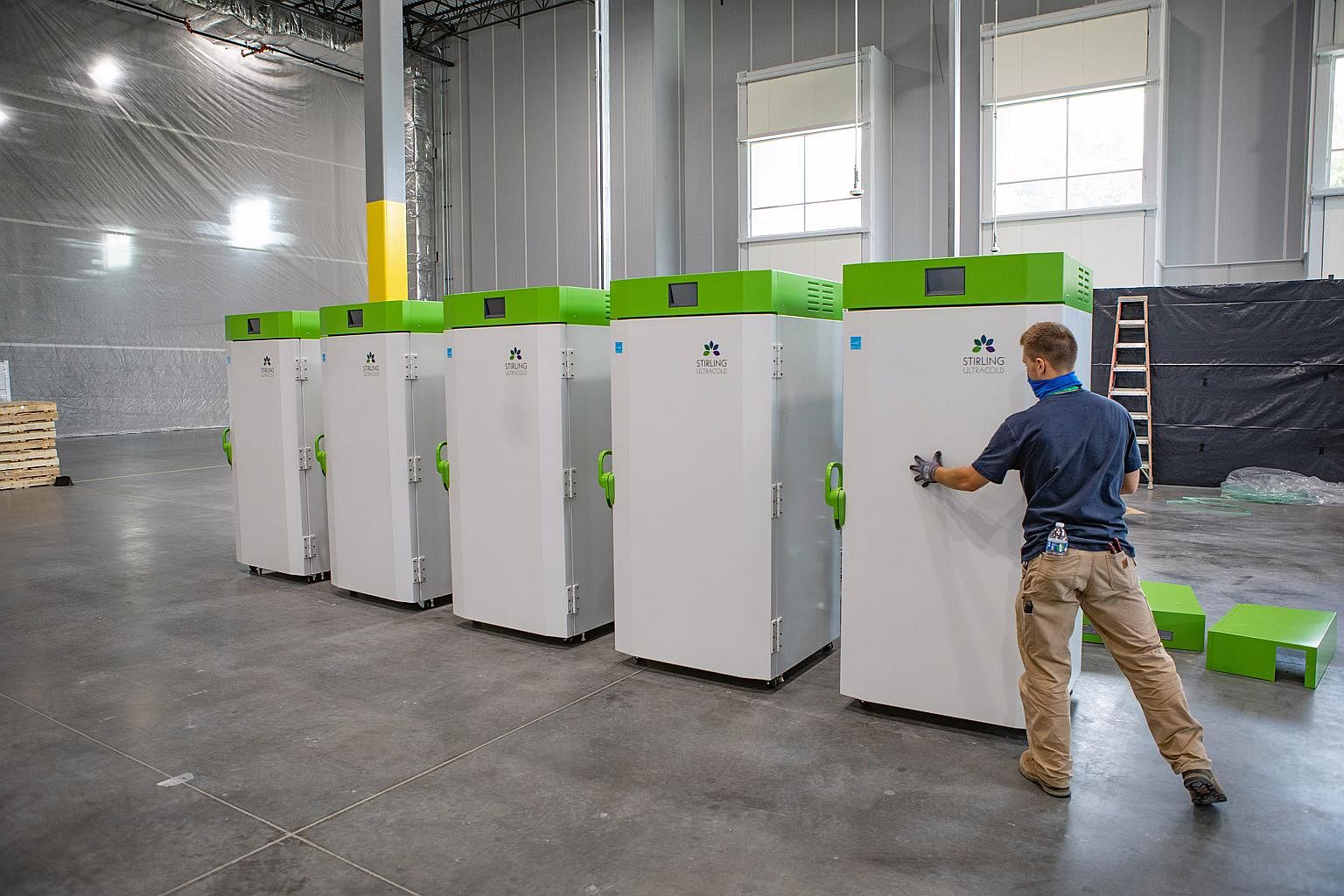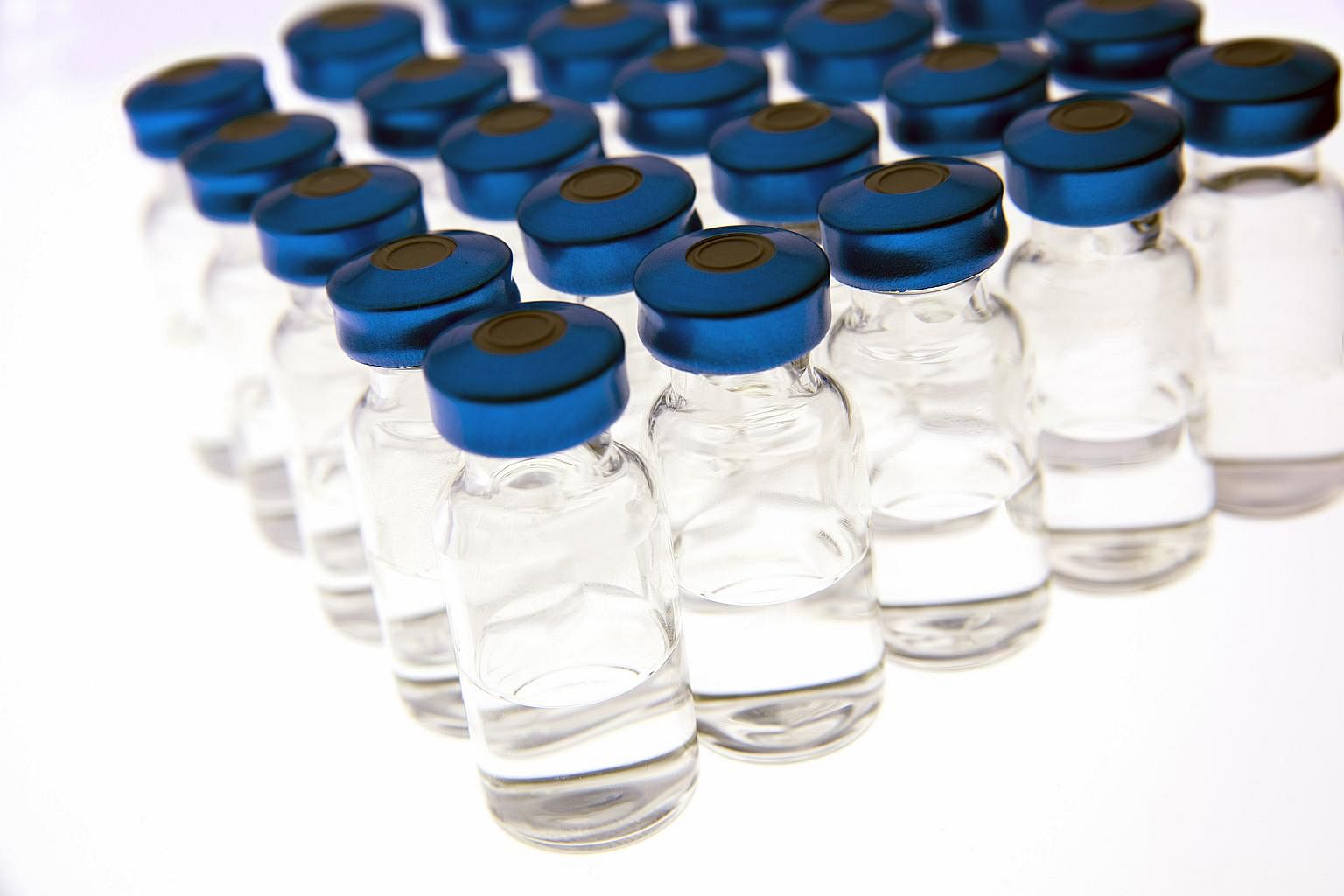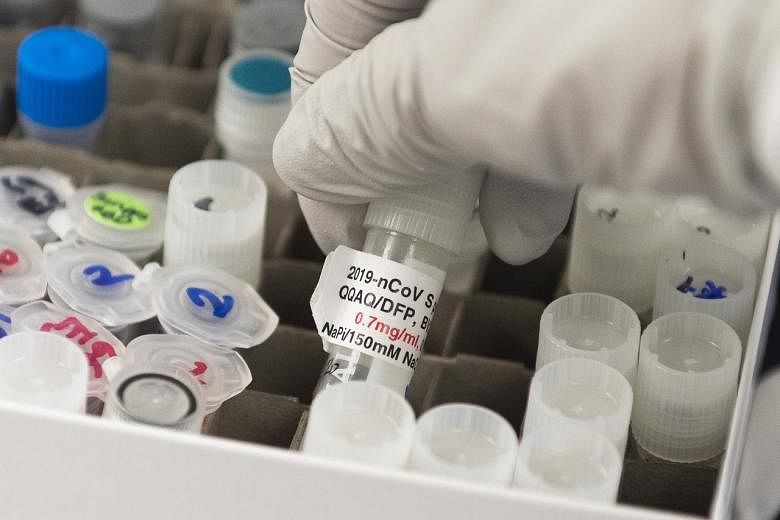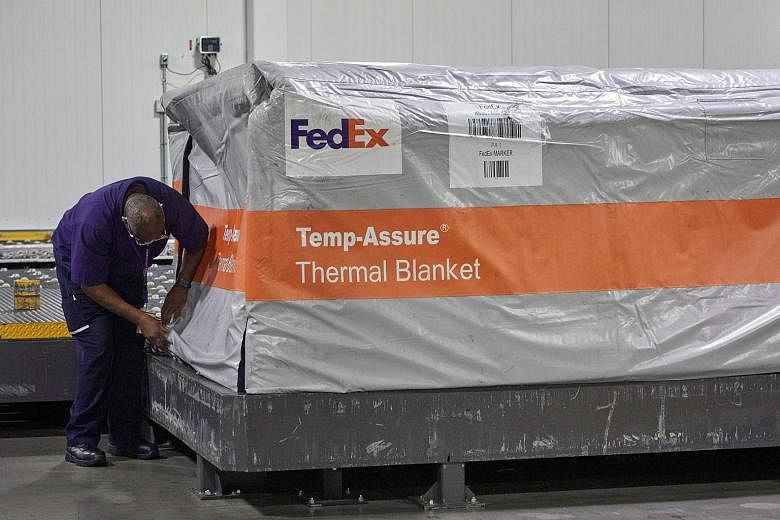NEW YORK (NYTIMES) - Many things will have to work out to end the coronavirus pandemic. Drug companies will have to develop a safe and effective vaccine. Billions of people will have to consent to vaccination.
But there are more prosaic challenges, too.
Among them: Companies may have to transport tiny glass vials thousands of miles while keeping them as cold as the South Pole in the depths of winter.
A number of the leading Covid-19 vaccines under development will need to be kept at temperatures as low as minus 80 deg C from the moment they are bottled to the time they are ready to be injected into patients' arms.
That will not be easy. Vaccines may be manufactured on one continent and shipped to another. They will go from logistics hub to logistics hub before ending up at the hospitals and other facilities that will administer them.
While no vaccine has yet been approved by health officials in the United States, preparations for a mass-vaccination campaign are gearing up.
The US military and a federal contractor are expected to play a role in coordinating the distribution. But a hodgepodge of companies are scrambling to figure out how to keep hundreds of millions of doses of a vaccine very, very cold.
Planes, trucks and warehouses will need to be outfitted with freezers. Glass vials will need to withstand icy climes. Someone will need to make a lot more dry ice.
"We're only now beginning to understand the complexities of the delivery side of all of this," said Mr J. Stephen Morrison, senior vice-president at the Centre for Strategic and International Studies, a research firm. "And there's no getting around it. These have stark temperature demands that will constrain access and delivery."
President Donald Trump last Friday (Sept 18) asserted that hundreds of millions of doses of an unidentified vaccine will be available to all Americans by April. That timeline is more ambitious than what his own advisers have described.
Dr Robert Redfield, director of the Centres for Disease Control and Prevention, told a Senate committee last Wednesday that a vaccine would not be widely available until the middle of next year.
Of the three vaccines that have advanced to Phase 3 trials, two - one made by Moderna and the National Institutes of Health, and the other by Pfizer and BioNTech - need to be kept in a near constant deep freeze. This is because they are made with genetic materials that fall apart when they thaw.
Another leading vaccine candidate, being developed by AstraZeneca and Oxford University, must be kept cool but not frozen.
McKesson, a major drug distributor, won a major federal contract last month to help distribute a coronavirus vaccine. Much of the work, however, will fall to companies outside the medical and drug industries.
The major US logistics companies, including UPS and FedEx, already have networks of freezers that they use to ship perishable food and medical supplies. The companies have experience shipping vaccines for other illnesses, including the seasonal flu.

But the Covid-19 vaccination effort is likely to dwarf all previous campaigns.
UPS said it was constructing a so-called freezer farm in Louisville, Kentucky, the company's largest hub, where it can store millions of doses at subzero temperatures.
At FedEx, the vaccine preparations are being led by Mr Richard W. Smith, the son of the company's founder Fred W. Smith. The younger Smith, who runs the company's airline operations in the Americas, was in charge of the life sciences business for FedEx's airline operations in 2009, during the H1N1 pandemic. At the time, the US government asked FedEx to prepare to help transport vaccines, Mr Smith said, and the company doubled its number of freezers around the globe.
"Fortunately, H1N1 did not rise to the level of the pandemic we thought it could be," he said. "But that allowed us to really beef up our cold-chain infrastructure."
As if the challenge is not sufficiently daunting, the world is facing a looming shortage of dry ice - an unexpected side effect of the pandemic.

Dry ice, the stuff that exudes chilly smoke and enthralls school-age scientists, is made from carbon dioxide, which is most commonly created as a by-product during the production of ethanol.
But ethanol production ebbs and flows based on the demand for gasoline. This spring, as stay-at-home orders went into effect, people began driving less. As a result, ethanol production slumped, and so did the supply of carbon dioxide.
UPS and FedEx are taking matters into their own hands. FedEx already has machines in warehouses that can produce dry ice, and UPS said it was considering adding them.
The companies will also have to provide their delivery employees with special training and equipment like gloves to handle their icy wares.
Pfizer has designed a special box to transport its hoped-for vaccine. The boxes, roughly the size of a large cooler, will hold a couple of hundred glass vials, each containing 10 to 20 doses of vaccine. The boxes are equipped with GPS-enabled thermal sensors, allowing Pfizer to know where the boxes are and how cold they are.
All of this leads to another problem: Glass often cracks in extreme cold.
Early this year, Corning, a 169-year-old glassmaker in upstate New York, approached officials at the Department of Health and Human Services with a warning: There would not be enough cold-resistant glass vials to handle a frozen vaccine, said Mr Brendan Mosher, Corning's head of pharmaceutical technologies.
Corning pitched a solution. It could make millions of vials with a new type of pharmaceutical-grade glass that can withstand the lowest temperatures.

In June, the government awarded the company a US$204 million (S$277 million) contract to increase its production of the special vials. The new glass is made without boron, a common ingredient in conventional glass that can lead to contamination of whatever is in the vials.
Mr Mosher said Corning was using the federal money to quadruple the capacity at its plant in Big Flats, New York; to accelerate construction of a glass furnace in New Jersey; and to speed up construction of an additional plant in North Carolina. It is hiring 300 workers and says it is on track to start producing hundreds of millions of glass vials next year.
Even if there is enough dry ice and chilled warehouses and sturdy vials, everyday pharmacies are unlikely to be equipped to stockpile large quantities of vaccines that require ultracold storage. Nevertheless, they might be able to keep Pfizer's cooler-size boxes on hand, and Moderna's vaccine can be stored at less extreme temperatures in the days before it is administered.
In a presentation to the White House coronavirus task force last month, Ms Kathleen Dooling, a disease expert with the CDC, said strict temperature requirements "will make it very difficult for community clinics and local pharmacies to store and administer". She said the vaccine would have to be dispensed "at centralised sites with adequate equipment and high throughput". It is not clear where those sites will be or who will administer the vaccines.
That is just in the United States.
A vaccine requiring stringent temperature controls would be off limits for much of the developing world. A recent study by DHL and McKinsey found that a cold vaccine would be accessible to about 2.5 billion people in 25 countries. Large parts of Africa, South America and Asia, where super-cold freezers are sparse, would be left out.
"The consequence is to reinforce the staggering bias in favour of the wealthy and powerful few countries," said Mr Morrison, of the Centre for Strategic and International Studies.












